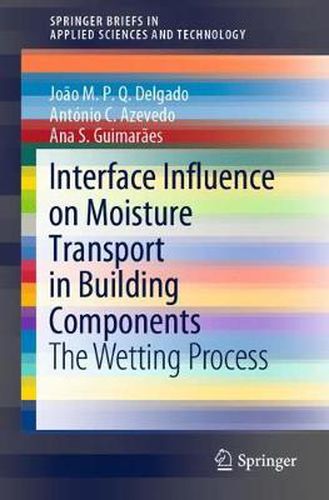Readings Newsletter
Become a Readings Member to make your shopping experience even easier.
Sign in or sign up for free!
You’re not far away from qualifying for FREE standard shipping within Australia
You’ve qualified for FREE standard shipping within Australia
The cart is loading…






This title is printed to order. This book may have been self-published. If so, we cannot guarantee the quality of the content. In the main most books will have gone through the editing process however some may not. We therefore suggest that you be aware of this before ordering this book. If in doubt check either the author or publisher’s details as we are unable to accept any returns unless they are faulty. Please contact us if you have any questions.
The knowledge of moisture migration inside building materials and construction building components is decisive for the way they behave when in use. The durability, waterproofing, degrading aspect and thermal behaviour of these materials are strongly influenced by the existence of moisture within their interior, which provoke changes in their normal performance, something that is normally hard to predict. Due to the awareness of this problem, the scientific community have per-formed various studies about the existence of moisture inside porous materials. The complex aspects of moisture migration phenomenon tended to encompass monolithic building elements, since the existence of joints or layers contributes to the change of moisture transfer along the respective building element that contribute to the change of mass transfer law. The presentation of an experimental analyses concerning moisture transfer in the interface of material that makes up masonry is described in such a way as to evaluate the durability and/or avoid building damages.
In this work it was analysed, during the wetting process, the influence of different types of interface, commonly observed in masonry, such as: perfect con-tact, joints of cement mortar, lime mortar, and the air space interface. The results allow the calculation of the hygric resistance. With these results, it is possible to use any advanced hygrothermal simulation program to study the water transport in building elements, considering different interfaces and their hygric resistance.
$9.00 standard shipping within Australia
FREE standard shipping within Australia for orders over $100.00
Express & International shipping calculated at checkout
This title is printed to order. This book may have been self-published. If so, we cannot guarantee the quality of the content. In the main most books will have gone through the editing process however some may not. We therefore suggest that you be aware of this before ordering this book. If in doubt check either the author or publisher’s details as we are unable to accept any returns unless they are faulty. Please contact us if you have any questions.
The knowledge of moisture migration inside building materials and construction building components is decisive for the way they behave when in use. The durability, waterproofing, degrading aspect and thermal behaviour of these materials are strongly influenced by the existence of moisture within their interior, which provoke changes in their normal performance, something that is normally hard to predict. Due to the awareness of this problem, the scientific community have per-formed various studies about the existence of moisture inside porous materials. The complex aspects of moisture migration phenomenon tended to encompass monolithic building elements, since the existence of joints or layers contributes to the change of moisture transfer along the respective building element that contribute to the change of mass transfer law. The presentation of an experimental analyses concerning moisture transfer in the interface of material that makes up masonry is described in such a way as to evaluate the durability and/or avoid building damages.
In this work it was analysed, during the wetting process, the influence of different types of interface, commonly observed in masonry, such as: perfect con-tact, joints of cement mortar, lime mortar, and the air space interface. The results allow the calculation of the hygric resistance. With these results, it is possible to use any advanced hygrothermal simulation program to study the water transport in building elements, considering different interfaces and their hygric resistance.